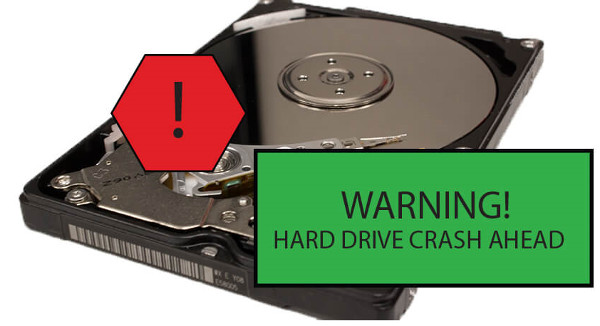We know computers always break down at the worst possible time, but what exactly prompts that failure?
It’s easy to think it was something you did since you were using it at the time, but while your online gaming frenzy might cause a temporary crash, everyday user actions rarely cause a broken computer.
Why Do Computers Break Down?
1. Physical Damage
Accidents happen, but they don’t always mean you need to buy a new computer. As an electrical item, liquid spills are a big problem. This could be anywhere from a spill on the keyboard, going overboard with the screen cleaning spray, or even a flood that reaches the computer.
Laptop users must be cautious when choosing their work surface, as cafes and kitchen tables often have small puddles left behind. If you’re lucky and the liquid didn’t fry the circuits, ongoing corrosion is still likely, as is stickiness to gum up the internal parts.
Similarly, dropping or knocking a computer around can cause damage or malfunction. Even a light thump of frustration can cause loose cables, disconnections, and internal damage.
2. Age
Computer parts have an expected lifetime, especially moving parts like fans or mechanical hard drives. Some computers can run 24/7 for up to a decade, while others can be barely used but fail within warranty.
When age is the issue, there are usually early warning signs like extra noise or slowing down. Still, the actual ‘break’ generally happens when you go to turn the computer on, perhaps after a crash or overnight – either it makes a valiant effort before giving up, or nothing happens at all.
Sometimes lasting age is the luck of the draw with how it was manufactured, and quality does play a big part in how long it can keep churning.
3. Power Surges
We like to think electricity is a constant stream that never varies, but computers are susceptible to both surges (too much electricity) and brownouts (not enough electricity).
You might notice the lights dimming or flickering during a brownout or glowing slightly too intensely during a surge. These variations never last long, and they’re not something you can control unless it’s just your house (it’s worth checking with your neighbors), but they can easily break your computer.
A surge protector can guard against mild increases in voltage, but brownouts and strong surges will still cause damage.
4. Heat
Overheating is a significant contributor to premature computer death. Some computer parts run hot and need plenty of cooling to keep them working.
You might not feel it from the outside, but internal components can rapidly build up heat that needs to go somewhere. When dust or pet hair blocks your airflow vents, the temperature increases, and parts bake themselves to failure.
At set temperatures, the computer will automatically switch off to try and cool down. However, the more often this happens and the higher the temps, the more likely your computer will die.
Check out our article “How to Diagnose an Overheating Laptop.”
5. Hard Drive Failure
Your data is stored on a hard drive, and if you’ve got a mechanical hard drive (most people do), it works a bit like a record player with a spinning ‘platter’ and a needle that reads it.
Small bumps, liquid, age, surges, and overheating can all trigger hard drive failure. Along with making your computer unusable, hard drive failure means your data is lost.
While sudden breakage might surprise you, note any strange noises or repeated crashes and back up your data in advance.
Check out our article “How to Detect Symptoms of Hard Drive Failure.”
Like a car, your computer needs to be serviced. We can check your PC physically and its software to make sure it’s running right and will keep on working for you. Give us a call at 863-582-2596 or contact me by clicking below.







